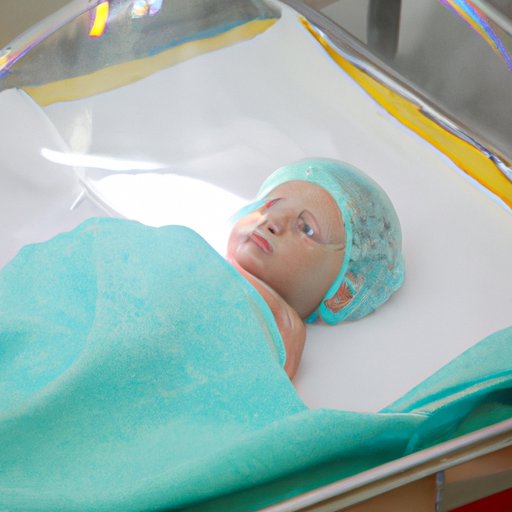I. Introduction
Jaundice is a common condition among newborns and adults characterized by a yellow discoloration of the skin and eyes. It occurs when there is too much bilirubin (a waste product) in the body and the liver is unable to eliminate it effectively. Immediate treatment is crucial as high levels of bilirubin can cause brain damage. Phototherapy, a non-invasive and effective treatment option, has become increasingly popular. It involves exposing the skin to light waves that help break down the bilirubin in the body.
II. A Comprehensive Guide to Phototherapy Treatment for Jaundice: Understanding the Science
Phototherapy is a medical treatment that uses light wavelengths to treat conditions like jaundice. During phototherapy, the skin is exposed to blue-green spectrum light which causes a reaction in the bilirubin molecule that makes it easier for the body to eliminate it. Proper equipment is essential during phototherapy, including appropriate wavelength of light and monitoring systems. Treatment procedures vary for infants and adults.
III. How Phototherapy Works to Treat Jaundice: A Breakdown of the Basics
There are two types of phototherapy: conventional (regular) phototherapy and fiber-optic phototherapy, which is a newer and faster method. Conventional phototherapy uses fluorescent bulbs placed above, below, or to the sides of the baby to expose the skin, while fiber-optic phototherapy uses a specially designed blanket that emits light. The lightwaves penetrate the skin and help break down the bilirubin into a form that can be eliminated in the urine or stool. Eye protection with goggles is essential while phototherapy is going on to prevent damage to the baby’s retina.
IV. From Concept to Implementation: The Science Behind Phototherapy and Jaundice Treatment
Medical professionals use cut-off points for measured bilirubin levels to determine the need for phototherapy. The most important aspect of the treatment is to maintain the appropriate light dosage and bilirubin levels between measurements. Conventional phototherapy requires a large area of the baby’s skin to be exposed when using a bilirubinometer to measure levels. Newer fiber-optic phototherapy devices measure bilirubin levels through the blanket, which means that the baby does not need undressing during the treatment.
V. Shedding Light on Jaundice: An In-depth Look at Phototherapy Treatment for Newborns
Newborns are more prone to jaundice because their immature liver is less effective at processing bilirubin, and the yellowing of the skin and eyes starts from the head downwards. The benefits of phototherapy in newborns outweigh the possibility of any side effects. Prolonged use or too high light intensity during phototherapy can cause dehydration, overheating, and skin rash. It is essential for a doctor or nurse to continuously monitor the baby during treatment to avoid such complications.
VI. Phototherapy for Jaundice: Understanding the Mechanism of Action and Treatment Outcomes
Typically, phototherapy treatment can last from 24-96 hours, depending on how quickly the bilirubin levels in the bloodstream decrease. The two most common side effects of phototherapy in newborns are loose stool and skin rash, with both being mostly harmless. In rare cases, some babies may develop complications like dehydration and overheating. Babies who receive adequate care and monitoring usually make a full recovery. It is essential for caregivers to give the baby plenty of fluids and monitor urine and stool output, which helps flush the bilirubin released during treatment from the baby’s body.
VII. Conclusion
Jaundice can be alarming to parents, but prompt diagnosis and treatment are key to optimal outcomes. Phototherapy has proven to be an effective treatment option for patients with high bilirubin levels, both in adults and newborns. This treatment is relatively non-invasive and non-painful, which makes it ideal for newborns who require medical attention. Regular follow-up by a medical professional is recommended, and caregivers should monitor the baby’s health regularly. Phototherapy treatment for jaundice is a straightforward process that offers new hope of a full recovery.
(Note: Is this article not meeting your expectations? Do you have knowledge or insights to share? Unlock new opportunities and expand your reach by joining our authors team. Click Registration to join us and share your expertise with our readers.)
